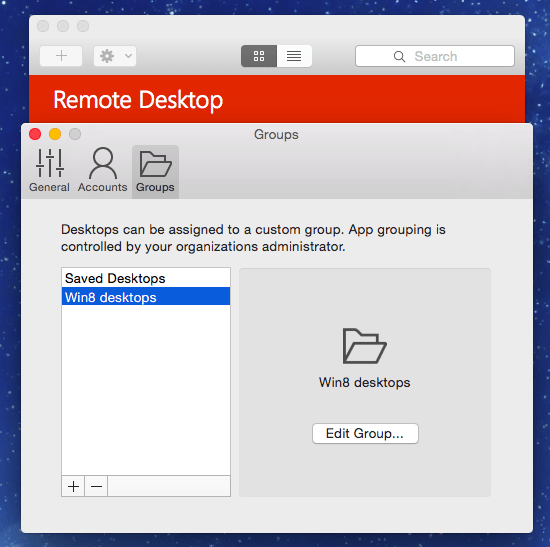

If you are running any version of MacOS before Big Sur, avoid it at all costs if you're running Bug Sur, sadly you're stuck with it. This does all of the same stuff, but the glitches reduce productivity.

Basically, the previous generation of this program worked much better. Stealing focus across multiple screens, so that all windows activate, rather than simply the screen that you're working in, meaning that anything running on the native computer gets bumped off of the screen until you minimise windows. There are too many OS glitches, with the menu bar randomly disappearing from the top of the screen, pointer and screen items misaligning semi-regularly as the window jumps into a slightly incorrect postiion on the screen, but the pointer remains correctly orientated so that they are a few pixels out with each other. If you are on Catalina, do not upgrade to this. Reminder: Saving all documents to the cloud instead of your computer can be a lifesaver, especially if you are having an issue with your CSUMB computer and the computer needs to be swapped out.The latest version is not nearly as stable as the now-superseded earlier versions, which will not work with MacOS Big Sur. The use of this software is really within everyone’s reach, making it a perfect solution for both remote assistance and home working. Once this is complete you should return to Remote Lab Access Instructions Step 5 The software is free for non-professional use, very light to run, and requires no installation or configuration: just download it from the site and launch the file. It may take several seconds for the window to open. Your connection to the lab computer will be established. Download Remote Desktop from the App Store.

Select "Continue" if this window appears. You may be prompted to verify security settings. A window will open where you will be prompted to enter a username and password. Your computer will attempt to connect to the lab computer using Microsoft Remote Desktop 10. Simply download the application from Apple's App store, install. Double-click this file. The remote desktop connection file will appear in your computer's downloads folder. In this video, I'll show you how to use Microsoft Remote Desktop on a Mac. NoMachine Free Remote Desktop Software For Mac Devolutions Remote Desktop Manager Chrome Remote Desktop Apple Remote Desktop Microsoft Remote Desktop for Mac Conclusion Related 1. Select "Download". The remote desktop connection file will appear in your computer's downloads folder. A window will open and you will be prompted to download the connection file.

Once the Microsoft Remote Desktop 10 application is installed click "Connect" on available labs computer (see step 2). These instructions are for the installation of Remote Desktop for MacOS, needed to access the computer lab machines remotely (Step 4 of the Remote Lab Access instructions).īefore attempting to connect to a windows lab computer, you will need to install "Microsoft Remote Desktop" from the App Store located here: /us/app/microsoft- remote-desktop/id1295203466


 0 kommentar(er)
0 kommentar(er)
